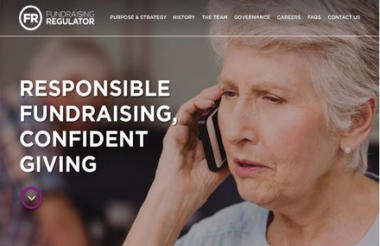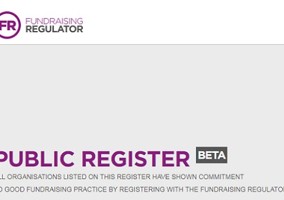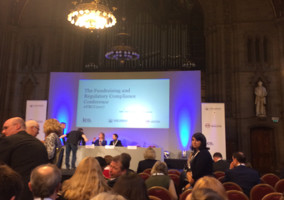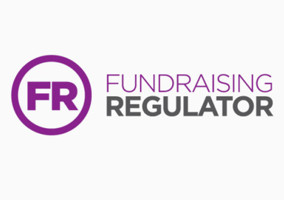Yesterday afternoon the Fundraising Regulator published a list of all charities which had either paid or not paid its levy. The regulator’s list has named and shamed 162 charities yet to contribute, but what will it mean for those organisations moving forward?
The name and shame blow when it came was delivered without any great fanfare. As has become almost a trait of the regulator when publishing eagerly awaited documents of great importance, a simple press release and a few tweets were all that accompanied yesterday's published list of the names of every charity to have either paid or, more crucially, not paid the levy.
The Fundraising Regulator’s travails with the first round of its levy on fundraising spend have been well-documented this year, and publishing the full list of non-paying charities, a move first mooted by the chief executive of NCVO, was always viewed as something of a ‘nuclear option’. If indeed this was a nuclear option, it was more a controlled explosion than a direct hit.
By our count, there are 162 organisations listed by the regulator as having neither paid nor committed to retroactively paying the first round of the fundraising levy. There are a further 95 organisations which have yet to pay, but aren’t listed by the regulator as they are still in negotiations. Then you have to factor in a further 13 organisations listed with an asterisk to denote that while they’ve not paid the first year’s levy, they have already committed to paying next year.
The published list features 1,570 organisations asked by the regulator to pay the levy. For some this statistic can be viewed in a ‘glass half-full’ kind of way. As the famous song by Meatloaf almost goes: 1,408 out of 1,570 ain’t bad.
The list also shows that the vast majority of large and, for lack of a better word, ‘proper’ charities have all bent the knee and contributed to the levy. Included amongst the list of paying organisations the names of five organisations which originally fought tooth and nail with the regulator over the levy and its start-up payments: The British Museum, Médecins Sans Frontières UK, RNIB, the Tate Gallery and the Roman Catholic Diocese of Westminster. All squared up and on board with the independent system of regulation; beacons of best practice one and all.
The list shows that the regulator has had its successes in the first year, and fair play to them. But what does this all mean now for the organisations named and shamed, and what kind of organisations are they?
Medical, religious and educational organisations
The largest group of non-paying organisations lumped together by charitable aims, could best be described as being medical or health organisations. There were 22 non-paying medical organisations including hospices, hospital trusts and medical research charities.
Medical charities were closely followed by religious organisations who, between the variously represented faiths, accounted for around 20 non-contributing organisations. Amongst their number were two of the largest, certainly in terms of income anyway, of the non-paying charities. ELIM Foursquare Gospel Alliance’s last set of published accounts showed it had income of over £60m while the Amanat Trust, the registered charity name for the Ummah Welfare Trust, had an income of around £24m.
Perhaps most interestingly, in terms of the make-up of non-paying charities, was the education sector. Despite Lord Grade’s rather less than subtle hints to The Times in June about “prominent universities” and “academe” being particularly begrudging with alumni funds, only 16 education organisations are listed as yet to pay. Of that 18, only seven identify as universities, while the various colleges of Oxford University all have an unblemished record, as too does the University College of London and Cambridge. The remaining 11 educational organisations yet to contribute to the levy are all schools.
Arts organisations account for a further 13 non-paying organisations and include one or two well known charities. Battersea Arts Centre is one name that leaps off the list, but perhaps given the fact that still, more than two years on from the catastrophic fire which gutted its premises, restoration work continues it can be forgiven for witholding its funds. Interestingly, operatic societies account for a high proportion of non-paying arts organisations. As do theatres and theatrical institutions, such as the Royal Academy of Dramatic Arts.
The rest
That leaves more than 60 organisations which are harder to define based purely on charitable aims. Within that figure there are everything from campaigning organisations such as War on Want, through to financial and policy think tanks, war memorials and one or two volunteering organisations.
In Fundraising Magazine
This helps to highlight the fact that the Fundraising Regulator’s first round of the levy has been blighted by its over reliance on out-of-date and inaccurate data which it had neither the resource nor apparent wherewithal to properly check.
One organisation, that has been named and shamed as a non-payer, despite the fact it doesn't really exist any more.
It publicly wound itself down after becoming a subsidiary of a new charity, which is listed as having paid the levy. The process was completed last year and has been reported across Civil Society Media's publications and discussed at sector events.
The Fundraising Regulator has admitted it has had a problem with the data on which the first round of the levy is based, but has yet to confirm how it will improve its accuracy as the levy moves into a second year. Until it does so, such clerical errors will continue and organisations of all shapes and sizes will be incorrectly invoiced or possibly even named and shamed for no reason.
The regulator has clearly made some big steps forward with the first round of the levy, but there is still a lot of work left for it to do.
Related Articles












